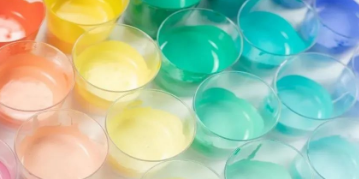Email:
Printing in the fall and winter seasons need to pay attention to the “small details” and to deal with the “small trick”!
Release time:2025-01-08
The arrival of winter, the impact of strong cold air, many areas have entered the snow and ice season, in addition to the impact of everyone's travel, the printing company's production is also affected by the impact of low temperature weather. So, to cope with the arrival of winter, printing need to pay attention to what details?

What should I do if the ink thickens in winter?
Low temperature in winter is an external factor for ink thickening. Under the influence of temperature, the ink (original ink) undergoes a change in thinning and thickening is a physical phenomenon, but the change is in the form, not in the essence (the basic performance of the ink). Ink is too thick and viscous, but it is best not to adjust its viscosity with thinner or ink blending oil. Because when the user needs to deploy ink, ink manufacturers produce the original ink can accommodate the total amount of various additives is a limit, beyond the limit amount, even if it can be used, but also weakened the basic performance of the ink, affecting the quality of printing printing technology.

The phenomenon of ink thickening caused by temperature can be solved by the following methods:
(1) Put the original ink on the heater or next to the heater, so that it slowly warms up and gradually returns to its original state;
(2) when in a hurry, you can use boiling water for external heating, the specific method is to pour boiling water into the basin, and then the original barrel (box) ink in the water, but to prevent water vapor immersion, to be removed when the water temperature drops to about 27 degrees Celsius, open the lid and stir evenly can be used. Printing workshop temperature to maintain at about 27 degrees Celsius is appropriate.
Ink at normal temperatures also has a thick phenomenon, because the consistency of the ink to a certain extent comprehensively reflect the rheological properties of the ink. If the thickening phenomenon is not caused by external factors, it can be summarized as the following two reasons: First, it is caused by the strong thixotropy in the intrinsic structure of the original ink, but after stirring to restore the original state, it can still be used; second, it is the deterioration of the expired ink or due to improper storage, which can not be used.
Fall and winter printing paper deformation how to do?
1, purchased products should be stored indoors as much as possible, avoid storing outdoors; products should be transported to the printing workshop 24 hours before printing, so that the temperature, humidity and paper in the printing workshop to achieve equilibrium, the temperature of the workshop can be maintained at 15-20 ° C, humidity can be maintained at 50-60%.
2, due to the big temperature difference between indoor and outdoor in the fall and winter, the weather is dry, paper moisture is easy to lose and thus the phenomenon of warping. Therefore, after opening the paper package, shorten the bare time as much as possible. After printing, wrap it with PE film to prevent the product from warping.
3、During the printing, over-oiling and drying process of the paper, the moisture content of the original paper will be lost, and cracks will be produced on the surface of the paper. You can increase the width of the pipe and adjust the depth of the pipe, or humidify the workshop, such as spraying water around the cardboard to increase the humidity in the air.
4, to cope with the upcoming winter, when the temperature decreases and the viscosity of the ink increases, it is easy to cause problems such as poor inking and printing blisters, you can add some ink additives and other additives to improve the applicability.

Low temperatures also have an effect on adhesives?
Adhesive is an important chemical agent in today's industrial production, the performance of the adhesive directly affects the quality of industrial products. In the production of adhesives in an important technical indicator is the control of temperature, adhesive raw materials are mostly organic polymers, the substance for the temperature has a high degree of dependence, which means that their mechanical properties and viscoelasticity with the temperature change affected.
So in the printing and bonding process of bonding paper and plastic products, polishing, varnishing printing products, it is recommended to strengthen the adhesive sealing, sealing hand wrapped boxes and other process management.
1、Shorten the time between gluing and laminating.
2、After bonding, increase the pressing force and prolong the pressing time or wipe back and forth with soft cloth to avoid opening or blistering phenomenon.
3, for the stiffness of the product, in order to make full contact with the two adhesive surfaces to pressure half an hour, so as not to bond the product automatically pop-up.
Related News
Contact Information
Address: 2F, London Corporate Headquarters, UK




